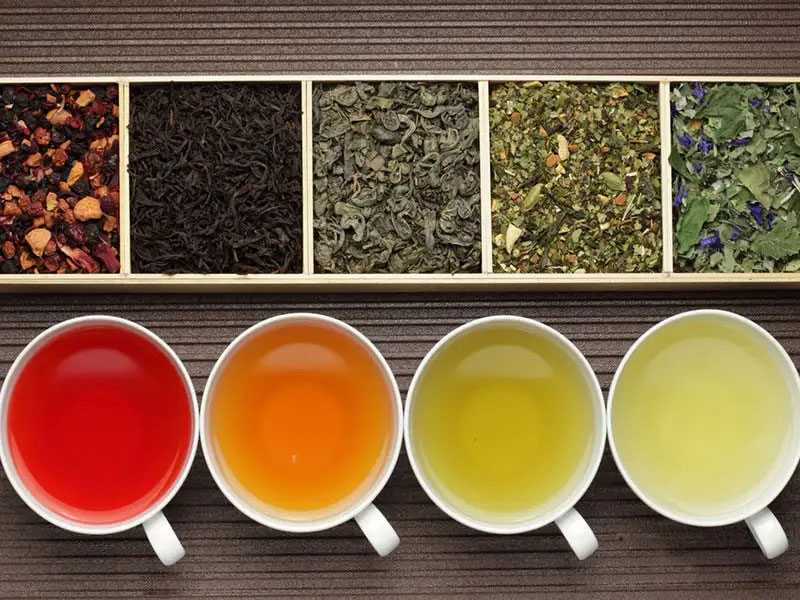
Table of Contents
Green tea and black tea are two of the most consumed beverages in the world — both originating from the same tea plant, Camellia sinensis. While they may seem similar, these two types of tea differ significantly in their flavour profiles, antioxidant content, and potential health benefits.
Rather than asking which one is better, it’s more useful to explore how green tea and black tea differ and what each offers. Understanding the characteristics of both can help you choose the perfect cup to suit your goals and preferences.
What Do Green and Black Tea Have in Common?
Despite their differences in colour, flavour, and caffeine content, green tea and black tea share a common origin. They’re both made from the leaves of the Camellia sinensis plant — the same source for other teas like oolong, white, and pu-erh.
The difference lies in the processing. Green tea is typically steamed or pan-fried soon after harvest to prevent oxidation, resulting in a light, vegetal flavour and greenish hue. Black tea, in contrast, undergoes full oxidation — a process that turns the leaves dark brown and contributes to its stronger flavour and full-bodied texture.
Although each tea type is processed differently, they both contain polyphenols and amino acids with well-documented antioxidant properties. They also include caffeine, although black tea typically has a higher caffeine content than green tea.
Shared Health Benefits of Green and Black Tea
Both green and black teas offer numerous nutritional advantages. Here are two of the most widely studied shared benefits:
May Support Heart Health
Both teas are rich in flavonoids, a group of polyphenols that support cardiovascular function. In particular, green tea extracts and black tea theaflavins have been studied for their roles in lowering blood pressure and improving cholesterol profiles.
One cup of black or green tea daily may provide meaningful heart-protective effects over time. In fact, a 2022 cohort study from the United Kingdom found that drinking black tea was associated with a lower risk of death from stroke, ischemic heart disease, and other cardiovascular conditions.
Meanwhile, green tea consumption has also been linked to modest improvements in both systolic and diastolic blood pressure in recent clinical research.
May Improve Brain Function
Both tea types contain caffeine and L-theanine, a combination known to boost alertness while promoting calm focus. Caffeine helps reduce fatigue and improve reaction time, while L-theanine encourages the release of GABA and dopamine — two chemicals linked to mental clarity and reduced stress.
Green tea typically has less caffeine than black tea, making it a good choice for people who are sensitive to stimulants or prefer a gentler lift. However, black tea may be more suitable for those looking for a stronger energy boost, without the intensity of coffee.
Key Differences Between Green and Black Tea
While both offer shared benefits, green tea and black tea differ significantly in flavour, nutritional composition, and processing.
Green Tea: Rich in EGCG and Lighter in Caffeine
Green tea is especially high in a powerful polyphenol called epigallocatechin gallate (EGCG), which is associated with a range of health effects — from liver protection to potential anti-cancer properties. It also contains more L-theanine than black tea, making it ideal for those seeking calm mental clarity.
In terms of flavour, green tea is often described as vegetal or grassy. It’s best brewed with water at a lower temperature (around 70–80°C) and for a shorter time (1–3 minutes) to avoid bitterness.
Black Tea: Full-Bodied and Theaflavin-Rich
Black tea is typically more oxidised, which enhances its darker colour and richer, fuller taste. It contains theaflavins — polyphenols unique to black tea that may support blood sugar balance, gut health, and lipid control.
Due to the black tea processing method, the final brew has a bolder, more robust flavour profile. This makes it a favourite for those who enjoy a stronger, more flavourful cup. Brewing methods for black tea usually involve hotter water (around 90–100°C) and a longer brewing time of 3–5 minutes.
Some studies, including those published in the International Journal of Food Sciences and Nutrition, have shown that theaflavins may contribute to weight loss, cholesterol reduction, and antioxidant support in human subjects.
Which One Should You Choose?
Ultimately, choosing between black and green tea depends on your health goals and taste preferences.
- Looking for calm focus? Green tea, with its lower caffeine and higher L-theanine content, is a great option.
- Prefer a bolder flavour and higher caffeine content? Black tea is ideal for a stronger energy lift and a more full-bodied taste.
- Interested in antioxidants? Both teas offer unique compounds — EGCG in green tea and theaflavins in black tea — each with different benefits.
Whichever tea you prefer, both are excellent additions to a healthy diet. For the best nutrition, skip the milk and sugar and enjoy your tea plain.
Final Thoughts
Green tea and black tea are two types of tea made from the same plant, but their differences in oxidation, brewing methods, and antioxidant content result in significant differences in taste and effect.
Whether you’re drinking black tea for its robust flavour or green tea for its calming effects, each offers a wealth of health-supporting benefits. You don’t have to choose just one — many tea lovers enjoy both, depending on the time of day and desired effect.




